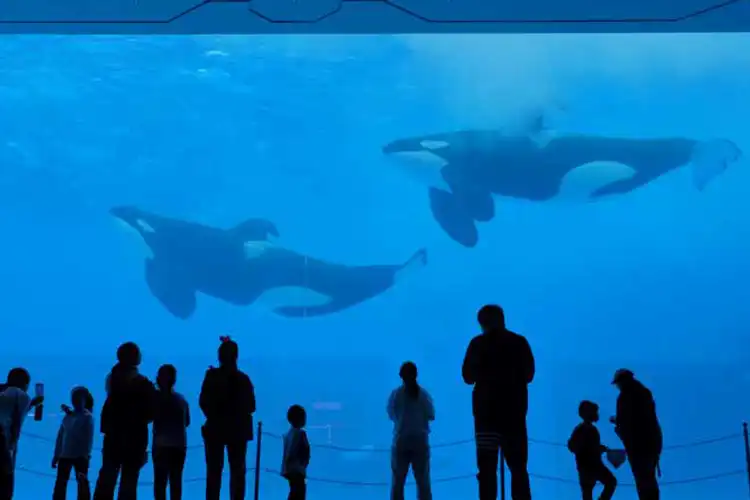
A newly published report by the China Cetacean Alliance (CCA) – a coalition of international and Chinese animal welfare organizations – has found that China has overtaken the United States as the holder of the highest number of captive orcas.
The CCA’s report Ocean Theme Parks: China’s Growing Captive Cetacean Industry (2019-2024), has revealed that there are now 22 orcas (also known as killer whales) in the country, most of which are on public display with ‘minimal welfare safeguards’.
Moreover, Chinese theme parks now house an estimated 1,307 cetaceans from a total of 15 different species, including the world’s largest number of captive bottlenose dolphins and beluga whales, totalling more than 730 and 145 animals respectively.
While much of the world is transitioning away from captive cetacean displays, with many Western tour operators now refusing to market attractions that involve them, China is building more.
As of July 2024, CCA reports that 101 captive cetacean facilities were operating in China, with an additional 11 under construction – more than double the number documented in the CCA’s 2015 report. Five new establishments have opened in the last five years alone.
There are currently 18 captive orcas held in the US at the three SeaWorld parks. The displays are now marketed as educational encounters rather than aquatic circus shows; no new animals are captured for display purposes and the orca breeding programmes ended in 2016.
In sharp contrast, China has imported 15 orcas from the Russian Sea of Okhotsk, and the other seven were born in captivity. Most of the orcas were only put on display in 2023, at a brand new facility called Chimelong Spaceship based in Hengqin Island, Zhuhai, in the province of Guangdong.
According to the report, since Russia banned the capture of orcas and belugas for entertainment in 2018, China has increasingly focused on captive breeding programmes and importing animals from Japan to meet the demand for the new theme parks.
‘China is the market for wild-caught cetaceans, which has harmed its international reputation, destabilized free-ranging populations, and resulted in an unknown number of animal deaths,’ said Dr Naomi Rose, senior scientist in marine mammal biology at the Animal Welfare Institute, which is a founding member of CCA.
‘The Chinese ocean theme park industry is incapable of meeting the complex physical and behavioural needs of cetaceans,’ said Rose, who visited China in January 2024 to observe orcas living in facilities there.
‘An increasing number of facilities offer visitors swim- or dive-with-cetacean experiences, putting the public at risk (as evidenced by the growing number of reported injuries), while failing to provide meaningful conservation information. Moreover, many animals are suffering from publicly documented trainer abuse and lack of specialized veterinary care.’
Detailed information on the status of the captive animals inside China’s ocean theme parks is difficult to obtain, as there is no publicly available source of information.
CCA’s report, however, cites several troubling deaths, including those of two critically endangered Yangtze finless porpoises.
Additionally, the number of wild-caught cetaceans registered as imported to China in the database of the Convention on International Trade in Endangered Species of Wild Fauna and Flora (CITES) does not match export records from the originating countries, including Japan.
According to the report, differences in the import and export data total more than 380 individual animals, making it an ‘area of critical concern for the government and the industry’ as it ‘represents a potential violation of CITES regulations.’
CCA has recommended that China’s government launch independent investigations into CITES import data and captive cetacean welfare, while also prohibiting close contact activities between visitors and cetaceans and preparing plans to phase out their display at ocean theme parks.


